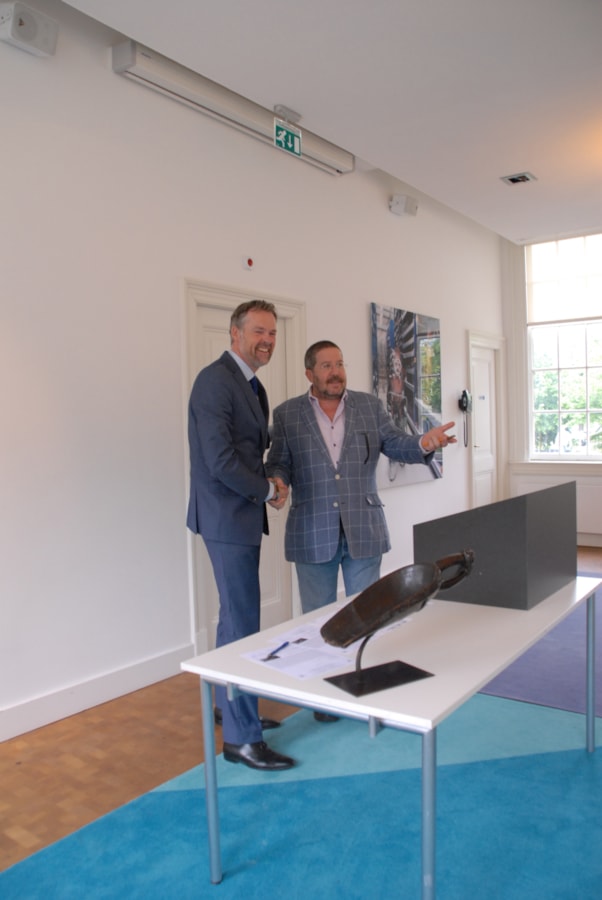
CELEBRATING 20 YEARS AT TEFAF MAASTRICHT -
In honor of my profound attachment to TEFAF and to the Netherlands and to give thanks for the last 20 years of collaboration and the warm welcome by the Dutch public I am delighted to be able to offer as gift to the Museum voor Volkenkunde in Leiden this rare Maori art-work. Here Museum Director Stijn Schoonderwoerd and I shake hands as the bailer becomes part of the Museum voor Volkenkunde and enters the Dutch public collections on Tuesday 16 May 2017.
A rare form of bailer used only in small canoes on inland or coastal waters. Type II bailers (type I bailers are used on the great war canoes) are generally rustic and often undecorated. The bailer presented here is of exceptional quality: the decor is very well carved and the bailer is extremely well balanced. The outer upper edge is decorated with a deeply carved stylized, floral decor. The underside of the bowl is marked with six horizontal, concave, adzed bands. At the end of the looped handle there is a powerfully ferocious tattooed head with its mouth open showing two large fangs at either side of the tongue. "This bailer is the work of the master-carver RAHARUHI RUKUPO (or one of his students) from the Gisbourne area and is carved in the style of the RONGO-WHAKAATA tribe circa 1850-60." (this attribution kindly supplied by David R. Simmons.).
Maori people, Gisbourne area, East coast, North Island, New Zealand, Polynesia. Wood (KAURI?) with a dark brown glossy patina. Fine patina of wear and age. One native and two European repairs to the bowl. 51 x 17,5 x 10 cm. TE HURINGA period (period of the turning), 1800 A.D. to present.
A gift to the Volkenkunde Museum in Leiden
May 17, 2017







